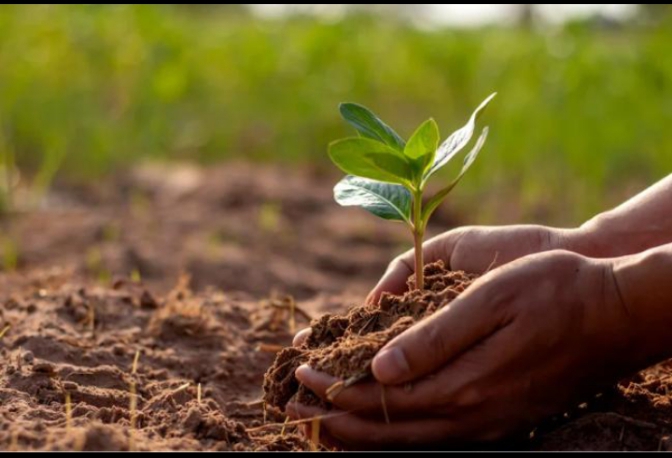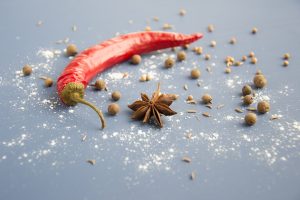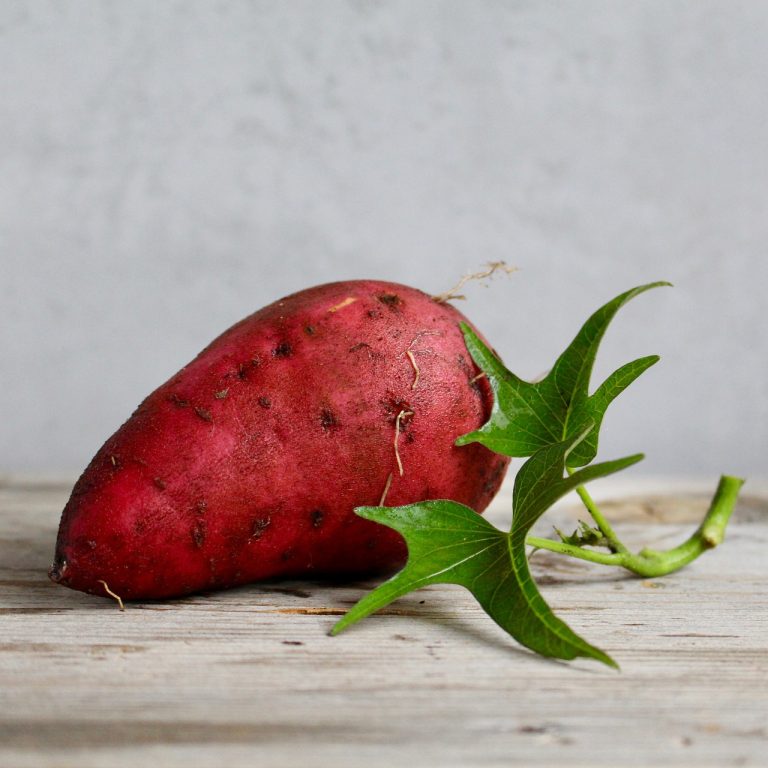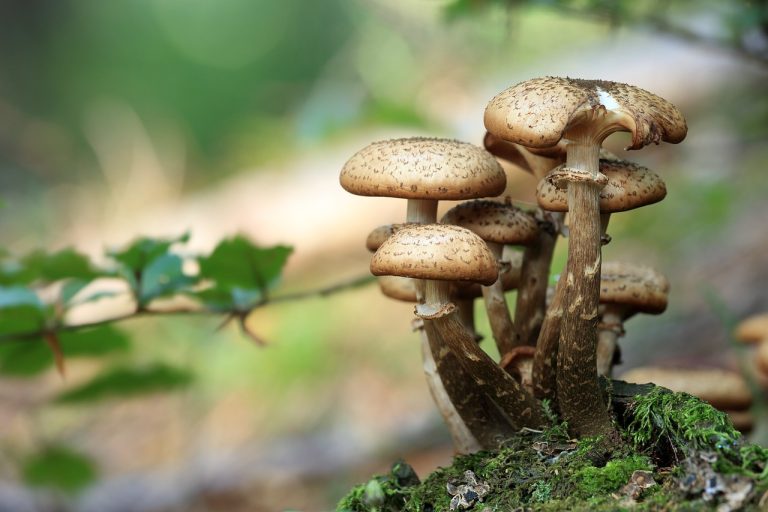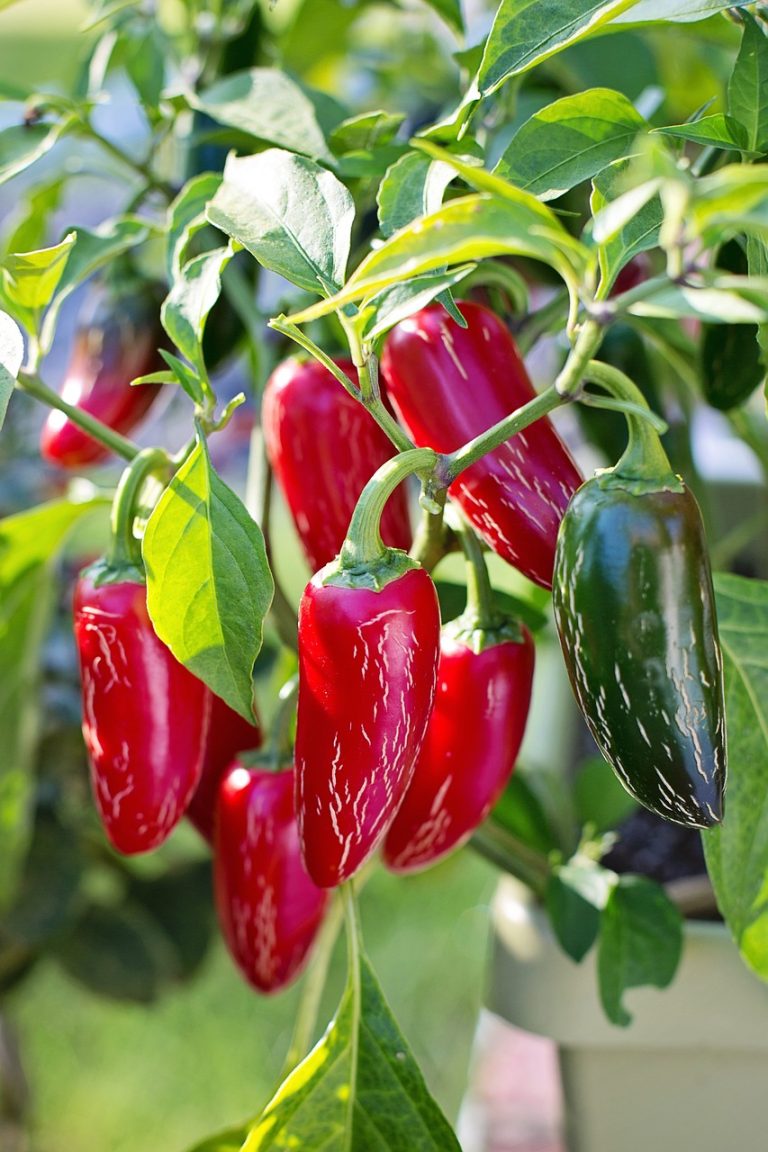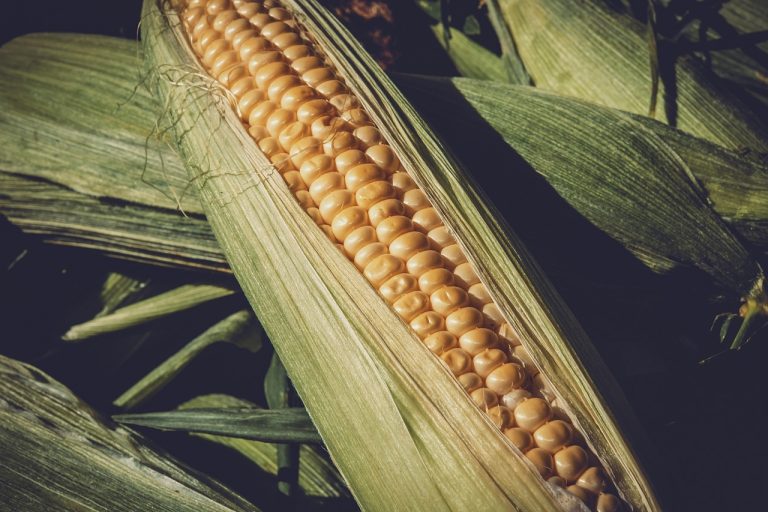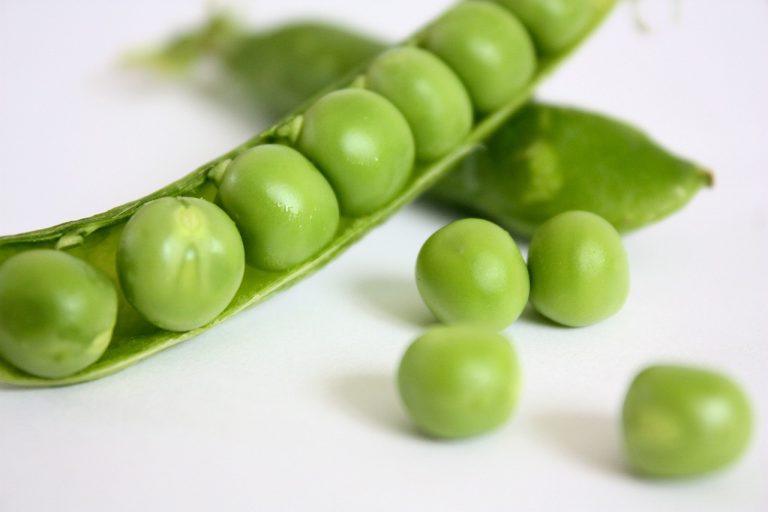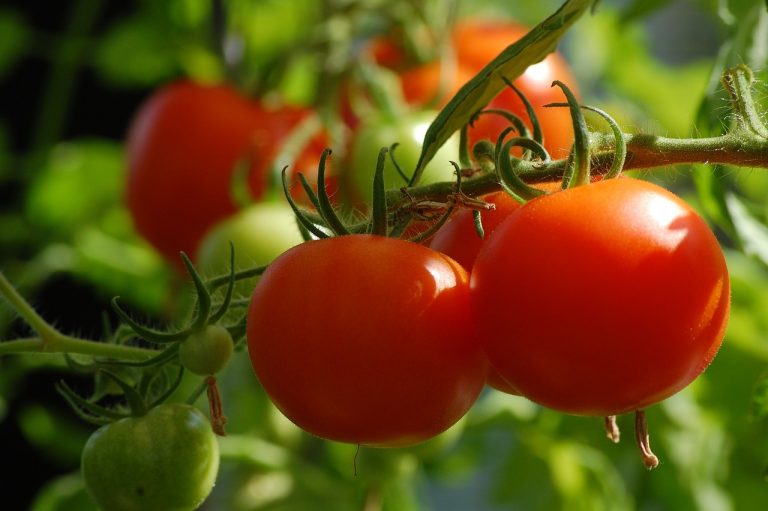HOW TO DRY AND SAVE PEPPER SEEDS (9 TIPS YOU HAVE TO KNOW)
Are you a pepper enthusiast who wants to savor the fiery flavors and vibrant colors of your favorite peppers year after year? Imagine having a bountiful supply of your beloved pepper varieties at your fingertips, ready to grace your garden with their spicy charm. Well, you’re in luck! In this guide, we’ll unveil the secrets of how to dry and save pepper seeds, ensuring that you can cultivate your very own pepper paradise season after season.
Say goodbye to store-bought peppers and hello to a self-sustaining source of spice, as we embark on a journey to preserve the essence of these fiery fruits. Let’s dive into the art of pepper seed preservation, unlocking a world of flavor, variety, and self-sufficiency that you never thought possible.
How to Dry and Save Pepper Seeds?
To save pepper seeds effectively, choose ripe, healthy peppers. Cut them open, remove seeds with gloves, rinse in a strainer to remove pulp. Spread on a paper towel or screen in a single layer, dry in a well-ventilated, shaded area for 1-2 weeks, turning occasionally.
After drying, store seeds in a cool, dark, dry place in a labeled envelope or airtight container with pepper type and harvest date. Properly stored seeds remain viable for years. Essential for seed-saving enthusiasts and gardeners preserving pepper varieties.
WHY SAVE PEPPER SEEDS
Saving pepper seeds is not only a cost-effective way to propagate your favorite pepper varieties but also allows you to select seeds from your healthiest and most productive plants. This subheading will elaborate on the benefits of seed saving, including maintaining genetic diversity and adapting to your local growing conditions.
CHOOSING THE RIGHT PEPPER VARIETIES FOR SEED SAVING
Embarking on the journey of saving pepper seeds is a rewarding endeavor, and it all starts with selecting the right pepper varieties. The choices you make at this stage can significantly impact your seed-saving process, and one of the key considerations is whether to opt for heirloom or hybrid peppers.
Heirloom peppers have a long and storied history, often passed down through generations. They are open-pollinated, meaning they naturally pollinate without human intervention. These peppers tend to produce offspring with traits closely resembling the parent plant, making them ideal for seed saving.
Heirloom pepper varieties come in a wide range of flavors, shapes, and colors, which can add diversity to your garden and culinary experiences. By saving seeds from heirloom peppers, you can help preserve these unique and sometimes rare cultivars.
On the other hand, hybrid peppers result from the controlled crossbreeding of two different pepper varieties. While hybrids may offer specific advantages such as disease resistance or high yields, they can be less suitable for seed saving.
The offspring of hybrid peppers may exhibit a wide range of traits and may not reliably retain the characteristics of the parent plants. Consequently, if you want to save seeds from hybrid peppers, it can be challenging to predict the quality and traits of the future plants.
When selecting pepper varieties for seed saving, it’s essential to decide whether you prioritize maintaining the integrity of a particular pepper’s characteristics (as in the case of heirlooms) or if you are open to the unpredictability of hybrids.
Here are some key factors to consider when choosing the right pepper varieties for seed saving:
HEIRLOOM VS. HYBRID:
Determine whether you want to save seeds from heirloom or hybrid peppers. Heirlooms are a more reliable choice if you want to preserve specific traits, while hybrids may require more attention and selection to maintain desired qualities.
FLAVOR AND USE:
Consider the flavor and intended use of the pepper varieties. Do you prefer sweet, hot, or mild peppers? Are you growing them for culinary purposes, pickling, or drying? Select varieties that align with your preferences.
CLIMATE AND GROWING CONDITIONS:
Take into account your local climate and growing conditions. Some pepper varieties are better suited to specific climates or soil types. Choose peppers that thrive in your area for a more successful seed-saving experience.
SPACE AND ISOLATION:
To prevent cross-pollination, ensure that you have enough space to grow different pepper varieties without them intermingling. This is especially crucial if you’re saving seeds from more than one type of pepper.
PURITY AND GENETIC DIVERSITY:
Maintaining genetic diversity in your pepper varieties is essential. Aim to save seeds from multiple plants to prevent inbreeding and maintain the vigor of the population.
HARVESTING PEPPER SEEDS
Harvesting pepper seeds involves a series of steps, from selecting the ideal peppers to drying them correctly. We’ll guide you through the process of when and how to pick peppers for seed saving, including selecting fully ripe, disease-free peppers.
SEED EXTRACTION
Once you’ve harvested your peppers, the next step is to extract the seeds. This section will detail the techniques for separating the seeds from the pepper flesh, whether you’re working with sweet bell peppers, spicy habaneros, or any other variety.
Seed extraction is a crucial step in the process of harvesting pepper seeds. Properly extracting the seeds ensures that they are clean and ready for storage. Whether you’re dealing with sweet bell peppers, spicy habaneros, or any other pepper variety, here are techniques for separating the seeds from the pepper flesh:
CUTTING THE PEPPER:
Begin by carefully cutting the ripe pepper open with a knife. You can cut it in half or make a small slit along one side, depending on your preference and the pepper’s size.
REMOVING THE SEEDS:
Inside the pepper, you’ll find the seeds attached to a central core or placenta. Use your fingers to gently pull the seeds away from the core. Be cautious not to damage the seeds during this process. It’s essential to handle the seeds with clean, dry hands to prevent any contamination.
CLEAN AND RINSE:
Once you’ve separated the seeds from the core, place them in a fine-mesh strainer or a sieve. Rinse the seeds thoroughly under running water to remove any remaining bits of pepper flesh and pulp. Swirl the seeds around in the strainer to ensure a thorough cleaning.
DRYING THE SEEDS:
After rinsing, spread the cleaned seeds on a clean, non-stick surface, such as a plate or a piece of wax paper. Allow them to air dry in a well-ventilated area, away from direct sunlight. Ensure that the seeds are completely dry before storing them, as any residual moisture can lead to mold or rot.
FERMENTATION:
Some gardeners choose to ferment pepper seeds to remove the gel-like coating surrounding the seeds. Fermentation can enhance germination rates and help prevent disease transmission. To ferment the seeds, place them in a container with a little water and let them sit for a few days, stirring the mixture daily. After fermentation, rinse the seeds thoroughly before drying.
STORAGE:
Once the seeds are dry, store them in airtight containers like envelopes, glass jars, or resealable plastic bags. It’s essential to label the containers with the pepper variety and the date of collection to keep track of your seeds.
CLEANING AND PREPARING SEEDS
Before storing, it’s crucial to clean and prepare the seeds to ensure their long-term viability. Discuss the methods of washing, rinsing, and drying the seeds, emphasizing the importance of avoiding mold or fungal growth.
DRYING THE SEEDS:
Spread Seeds for Drying: After rinsing, spread the seeds on a clean, non-stick surface like a plate or a piece of wax paper. Ensure that the seeds are evenly distributed and not clumped together.
AIR DRYING:
Place the seeds in a well-ventilated area with good air circulation. Avoid direct sunlight, as it can damage the seeds. Proper airflow is essential to expedite the drying process and prevent mold growth.
COMPLETE DRYING:
The seeds must be completely dry before storage. Depending on environmental conditions, this may take several days to a couple of weeks. Seeds are adequately dry when they snap or break when bent, rather than bending.
PREVENTING MOLD AND FUNGAL GROWTH:
CONTROL HUMIDITY:
The drying area should be dry with low humidity. High humidity can encourage mold or fungal growth on the seeds. Use a dehumidifier if necessary.
ADEQUATE VENTILATION:
Ensure the drying area has good ventilation to keep the air moving and prevent moisture buildup.
FREQUENT MONITORING:
Check the seeds regularly during the drying process. If you notice any signs of mold or fungal growth, remove the affected seeds immediately to prevent it from spreading to the rest.
PROPER STORAGE TECHNIQUES
To make sure your pepper seeds remain viable for years to come, you need to store them correctly. Explore the best practices for storing pepper seeds, including the use of airtight containers, moisture control, and labeling.
Store the completely dried seeds in airtight containers like envelopes, glass jars, or resealable plastic bags. Be sure these containers are also kept in a cool, dry, and dark place to maintain the seeds’ quality.
LABELING AND ORGANIZATION
Organizing and labeling your saved pepper seeds is essential for keeping track of different varieties and planting dates. We’ll provide tips on how to create a system that helps you stay organized and save time in future planting seasons.
TESTING SEED VIABILITY
To ensure the seeds you’ve saved are still viable, discuss methods for conducting a seed viability test. Explain how to perform a simple germination test to determine the percentage of seeds that will successfully sprout.
TIPS FOR SUCCESSFUL GERMINATION
To wrap up the guide, offer tips for successfully germinating your saved pepper seeds. Discuss factors like temperature, moisture, and timing that can influence the germination process.
Frequently Asked Questions (FAQ) about “How To Dry and Save Pepper Seeds”:
Why should I save pepper seeds?
Saving pepper seeds allows you to grow the same variety of peppers in the future, saving money and ensuring a consistent flavor and heat level.
When is the best time to harvest pepper seeds?
The best time to harvest pepper seeds is when the peppers are fully ripe on the plant, typically when they turn their mature color (e.g., red, yellow, or orange).
How do I extract pepper seeds from the peppers?
To extract pepper seeds, cut the pepper in half, scrape out the seeds and membrane, and place them in a container.
Should I wash the extracted seeds?
It’s generally not recommended to wash pepper seeds as water can remove some of the natural protections against diseases. Instead, you can dry them and remove debris manually.
How should I dry the pepper seeds?
Spread the extracted seeds on a paper towel or a screen in a well-ventilated area, away from direct sunlight, until they are completely dry.
How long does it take for pepper seeds to dry?
Drying times can vary depending on humidity, but it typically takes 1-2 weeks for pepper seeds to thoroughly dry.
What’s the best way to store dried pepper seeds?
Store dried pepper seeds in an airtight container, like a glass jar or a sealed plastic bag, and place it in a cool, dry, and dark location.
How long can I store pepper seeds and still expect them to be viable?
Pepper seeds can remain viable for 2-5 years if stored properly. However, their germination rate may decrease over time.
Can I store different types of pepper seeds together?
It’s best to store different pepper varieties in separate containers to prevent cross-pollination.
How can I test the viability of saved pepper seeds before planting?
Perform a seed viability test by placing a few seeds in a damp paper towel in a warm place. If they sprout within a week, they are still viable.
Should I label my saved pepper seeds for easy identification?
Yes, labeling your saved pepper seeds with the pepper variety and the year they were saved is a good practice for easy identification.
Can I share or trade my saved pepper seeds with other gardeners?
Yes, sharing or trading saved pepper seeds with other gardeners can be a great way to diversify your pepper varieties and contribute to the gardening community.
CONCLUSION
Learning how to dry and save pepper seeds is a valuable skill for gardeners and enthusiasts alike. By following the steps mentioned, you can preserve the genetic diversity of your favorite pepper varieties, ensuring a bountiful harvest year after year.
Not only does this method save you money, but it also promotes sustainability and self-sufficiency in your gardening endeavors. So, whether you’re a seasoned gardener or just starting out, give seed saving a try, and enjoy the satisfaction of nurturing your pepper plants from your very own saved seeds.
